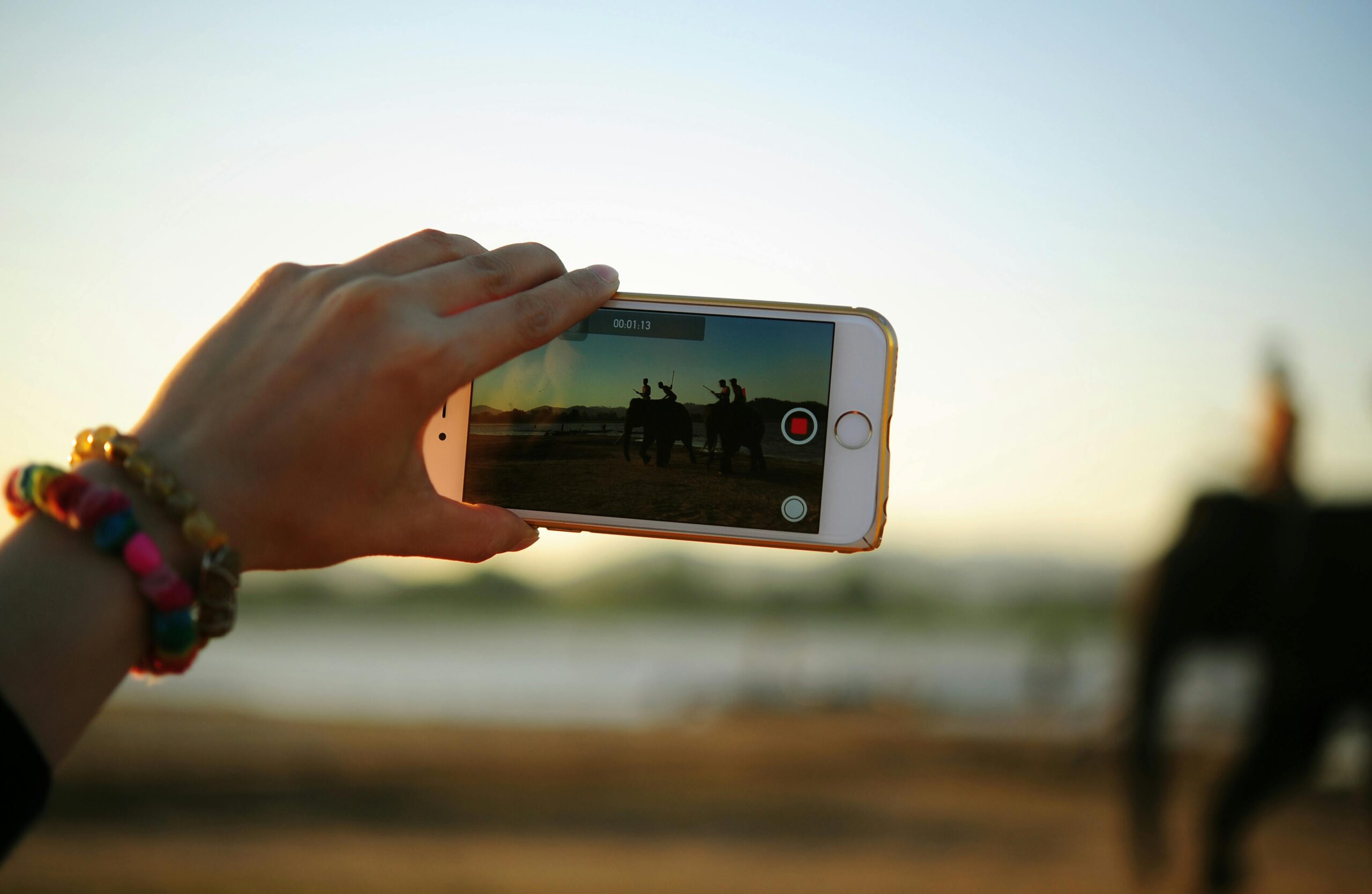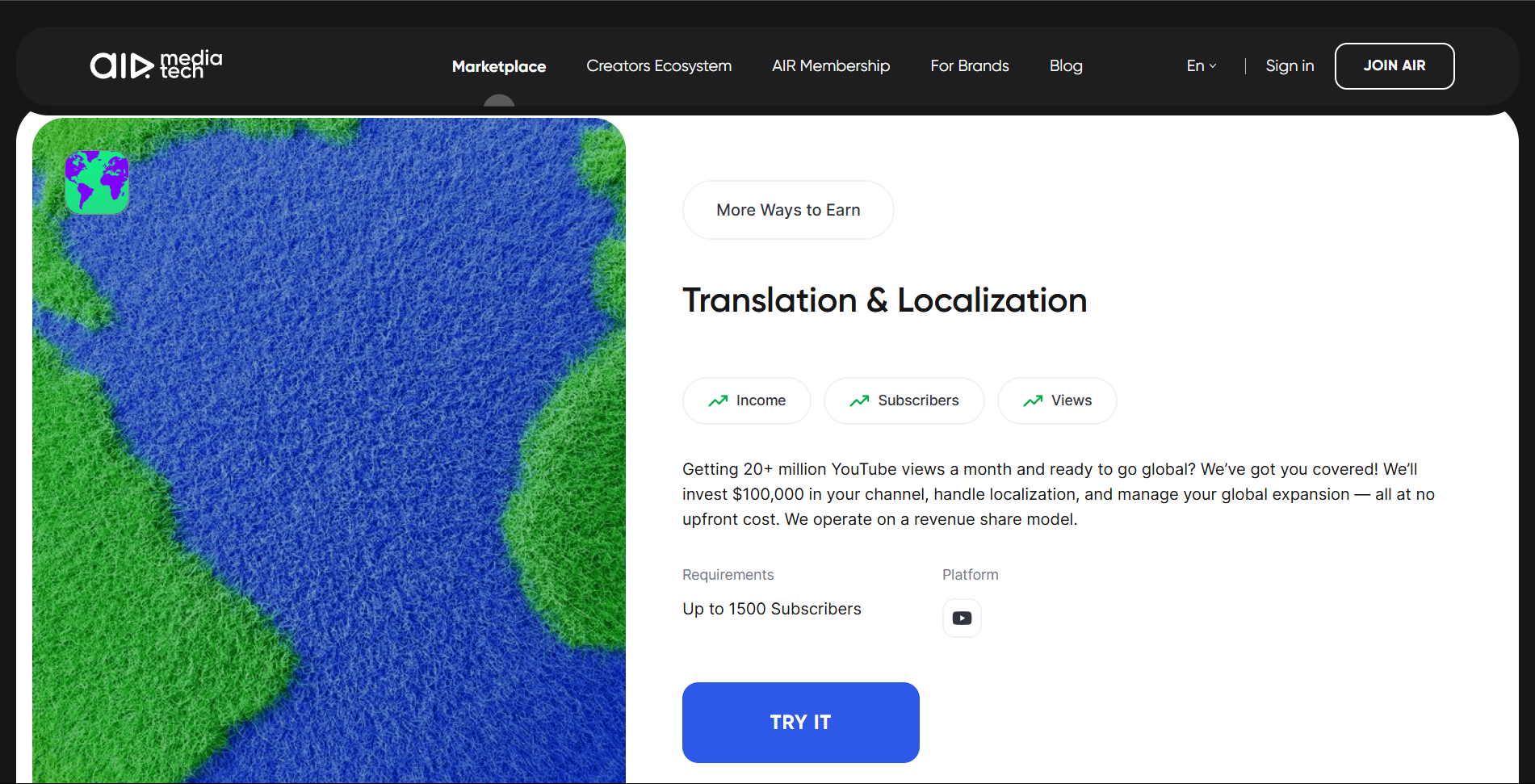Why Video Localization Is the Key to Global Content Success
The age we are living in now is the age of digital globalization. This means that countries’ borders no longer limit audiences from different countries. If you create a single video from your bedroom studio somewhere in Tokyo, you can go viral in São Paulo, New York, or Berlin. But yes, there’s a catch to it, too, that is language. Somweher there is langauage barrier somweher it is not.
So, truly, if you want to go global and reach various audiences, you have to speak the language of your audience. This is where video translation and video localization come into play.
Many social media influencers, content creators, and even YouTubers have already discovered this almighty secret to expand their viewership to a global level without a language barrier: partnering with a platform like AIR Media tech.
They help them localize and translate their videos so that they can resonate with their viewers in multiple countries and multiple languages.
Why Video Localization Is No Longer Optional?
So, let me be clear, the average user of the internet on this day has literally access to millions of hours of video content. But let me tell you, unless and until the content is in a language he or she understands, or at least presented in a way they can culturally relate to, chances are they will click away.
Let me more clearer, just think you are watching a video content that you are not understanding in any way, not in language, not in visuals, then what will you do? You will skip that video and choose to watch a video that you understand at least in way, right?
So that’s the same. Localization doesn’t just mean subtitles. It tends to include:
- Visual cues relevant to the target market
-
Accurate translation
-
Cultural adaptation
-
Localized voiceovers or dubbing
To be more precise, I can say that localization is mainly about making your video content feel more native to your audiences. It goes deeper than words, so what’s it about? It’s about emotion, reliability, and, more importantly, context.
Case in Point: YouTube and the Rise of Multilingual Channels
As if to illustrate the point, I can say that multilingual channels have emerged on YouTube, every single day, more and more people are coming to YouTube as content creators from a child of 7 to 8 years to a 70-75-year-old. YouTube has over 2.5 billion monthly active users. YouTube creators who make content in a single language are thus doing a great disservice to their audience numbers. Enter multilingual channels with dubbers creating content in English, Spanish, Hindi, Arabic, and who knows what else. In many ways, these creators are not producing content but repackaging something that they already have.
So, what are you waiting for?
In this era, Artificial Intelligence (AI) technology is far greater than any tool for dubbing videos and translating voice-overs into many different languages without forcing producers to record each language manually. AI video dubbing has made this large-scale production possible, from impossible, combined with precision, giving producers an efficient way to reach ne, wider global audiences.
Crossing Language Barriers to Connect with Your Audience
I can say that this much is true: If someone I mean users like me and yoseees content in their mother tongue, we tend to respond positively. It develops trust, familiarity, and a stronger emotional affinity.
65% of respondents in a survey by CSA Research stated that they prefer to consume content in their own language, even if poorly translated. 73% said they would be more willing to purchase if the information were available in their native language.
If you’re a creator, brand, or artist with goals overseas and choosing not to localize, you’re missing opportunities and money.
How To Start Localizing Your Content?
Localizing your content is pretty easy. It just needs the strength and confidence in you to take the leap into the global content creation. If you are ready, then I am giving a very simple roadmap to start localizing your content. Here’s how:
Identify Your Target Markets
YOu can just pick 2-3 countries where you have your existing viewership for your content or simply I can where you have your content that is performing well. If you are YouTube then you can check YouTube analytics for clues, I mean stats that says a lot.
Choose A Preferred Localization Partner
Now the next steps to loof for serveris from a localization partner that will offer you full localization, not just auto subtitles for your content. It should have video translatuinm cultural adapton, and even dubbing. That makes a lot different for you.
Translate And Test
Now’s the real time where you can start with a fewof your best-performing videos. Then you can translate them with the help of chosen localization partner and localize it, and publish them. Now, you have to monitor the video’s performance. Then Tweak back on feedback and work accordingly.
Scale Strategically
So, now that you will find what will work for you, then scale up. Now you can batch localize new video content and next consider creating your separate channels for different languages. This will help you to grow more.
Conclusion
We’re entering a new age where we can see that creativity knows no bounds and is limitless, but languages and emotions still mater, after all we are humans we work with emotions. So by translating and localizing your video content, you are opening a different door for millions of people who will be waiting to connect with your message you are giving your videos. Give a heads up!


Leave a Reply